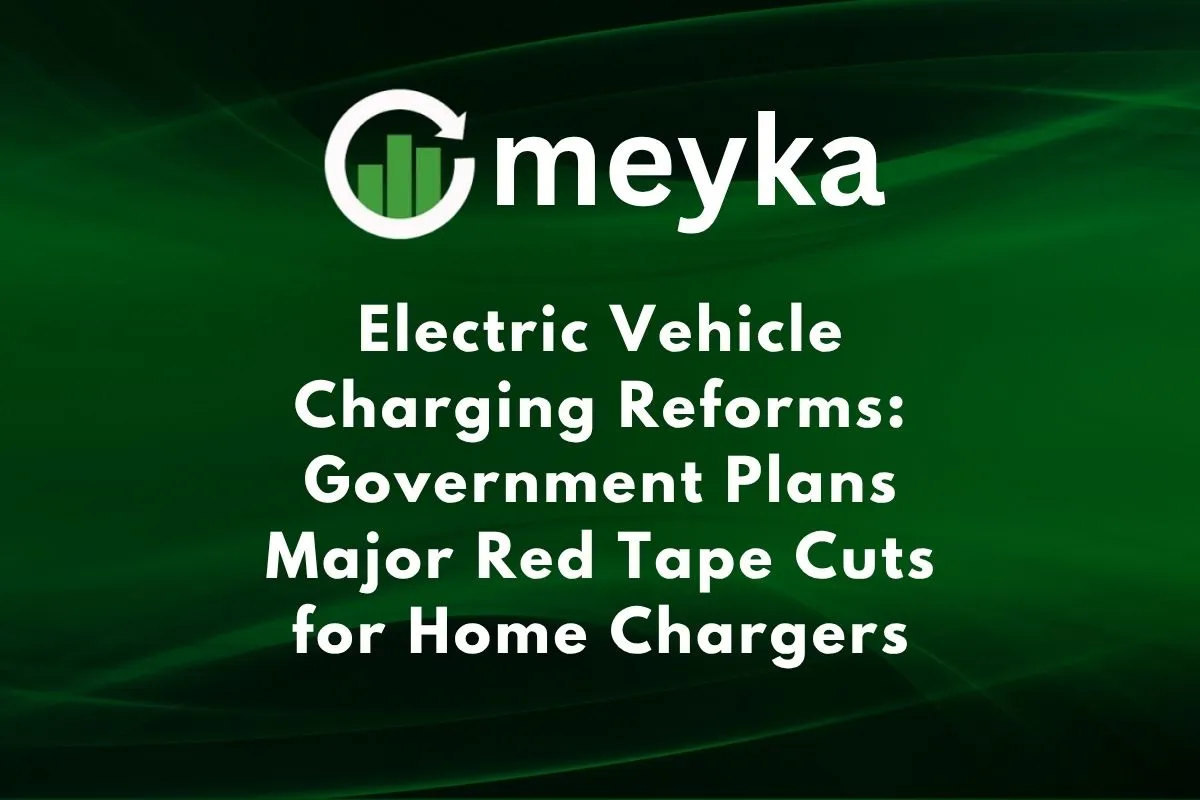Electric Vehicle Charging Reforms: Government Plans Major Red Tape Cuts for Home Chargers
We’re at a key moment for Electric Vehicle Charging at home. Many drivers still face big hurdles: no driveway, high installation fees, and complex approvals. Now the government is stepping in. On 29 October 2025, the UK announced sweeping reforms to make home charging cheaper and simpler. These changes could help more people plug in at home, and push the switch to electric further and faster.
What’s driving the reforms?
Home charging is key to the EV transition. If we cannot charge at home easily, salt‑infrastructure or public chargers become the only option, and that often means more hassle or higher cost.
- Around 40 % of UK households don’t have a driveway or off‑street parking.
- The cost savings: with home rates and overnight charging, families could run an EV for as little as 2 p per mile, that’s about £2.50 to travel from London to Birmingham.
- On the flip side, relying only on public charging can be more expensive per mile and less convenient.
- The government’s motives: accelerate EV uptake; make charging access fair (including renters, leaseholders, people without driveways); support domestic industry and infrastructure roll‑out.
What are the proposed changes?
Here’s what the reforms will tackle under the banner of home EV charging:
Planning permission cuts for street‑parking homes
For people who park on‑street rather than on a driveway, one big barrier is the need for planning permission when installing a “cross‑pavement charging gully” (a cable channel from home wallbox across pavement to car). The new plan is to remove or simplify this requirement, speeding approval and lowering fees by up to £250.
Mandating chargers in new covered car parks
New residential or shared covered car parks will be required to include EV charge‑points. This opens access for renters and flat‑dwellers.
Fairer electricity rates and tenant protections
Drivers with home chargers get access to domestic electricity rates, making the cost per mile very low (2 p/mile) rather than higher public‑tariff rates. The government will work with regulator Ofgem to protect tenants from landlords over‑charging for charging.
Infrastructure & rollout support
These reforms build on earlier schemes: e.g., a £25 million fund for local authorities to support cross‑pavement channels, and investment of £381 million to roll out more than 100,000 public chargers across England.
Implications and expected impacts
Here’s how these reforms could affect different stakeholders:
For consumers
- Homeowners will find charger installation less burdensome; approval delays and fees will drop.
- Renters/leaseholders / flat‑dwellers gain better access to home charging. This levels the playing field in the EV world.
- Lower cost per mile for charging means EVs become more cost‑competitive. At ~2 p/mile, it’s far cheaper than many petrol/diesel costs.
For landlords, property developers, and new builds
- New rules mean developers need to include charge‑points in new covered car parks. This potentially adds cost, but supports future‑proofing.
- Property managers and landlords need to be aware of tenant protections around charging costs.
For industry & infrastructure
- More home chargers and shared‑parking solutions = more demand for installers, hardware, and grid connections.
- Grid and network operators must handle increased load; reliability and standardization become important.
For the EV transition
- Removing a major barrier (home charging access) can accelerate EV adoption.
- By making charging easier and cheaper for all drivers, regardless of the parking situation, it widens the market.
Challenges, caveats, and considerations
No reform is perfect, and we need to keep some issues in mind.
- Timing & implementation: The reforms are proposed (consultation phase), full rollout and execution will take time.
- Technical & grid constraints: More home chargers mean more load on local networks, especially in dense urban areas. Upgrades may be needed.
- Coverage gaps: Even with these changes, people living in high‑rise flats or shared parking with no access to private wiring may still face hurdles.
- Who picks up the cost? Developers, landlords, and local councils may incur extra costs; these could trickle down.
- Ensuring fairness: Landlords may still find ways to pass costs to tenants; regulatory vigilance is needed.
- Unintended consequences: If mandates raise housing/building costs, it could affect rents or development. Al, so public‑charging tariffs still matter for those without home access.
Conclusion
We’re witnessing a meaningful shift in how we think about home Electric Vehicle Charging. The new reforms take on one of the biggest barriers to EV adoption: making charging at home harder or more expensive for many. By cutting paperwork, lowering fees, expanding access for renters and non‑driveway households, and working to keep costs low, the government is aiming to make the electric switch easier and fairfairer anyone thinking of going electric, this is good news. If you live in a flat, rent, or have street‑parking only, the odds of being able to charge at home are improving fast. Over time, as more homes and properties adopt these reforms, the broader shift to electric vehicles could accelerate.
If you’re planning to switch to an EV (or already driving one), keep an eye on local rollout and eligibility for home charger installations. The infrastructure is catching up, and that could make all the difference.
FAQS:
Yes, you can. You can use public charging stations or workplace chargers. It may take more planning, and charging might be slower, but it is possible to own an EV.
The cheapest way is to charge overnight using a standard home socket or a smart charger during off-peak electricity hours. This reduces cost and keeps charging simple.
No, electric vehicles don’t use engine oil. They have electric motors, not petrol engines, so you save money and time by avoiding regular oil changes.
Disclaimer:
The content shared by Meyka AI PTY LTD is solely for research and informational purposes. Meyka is not a financial advisory service, and the information provided should not be considered investment or trading advice.






